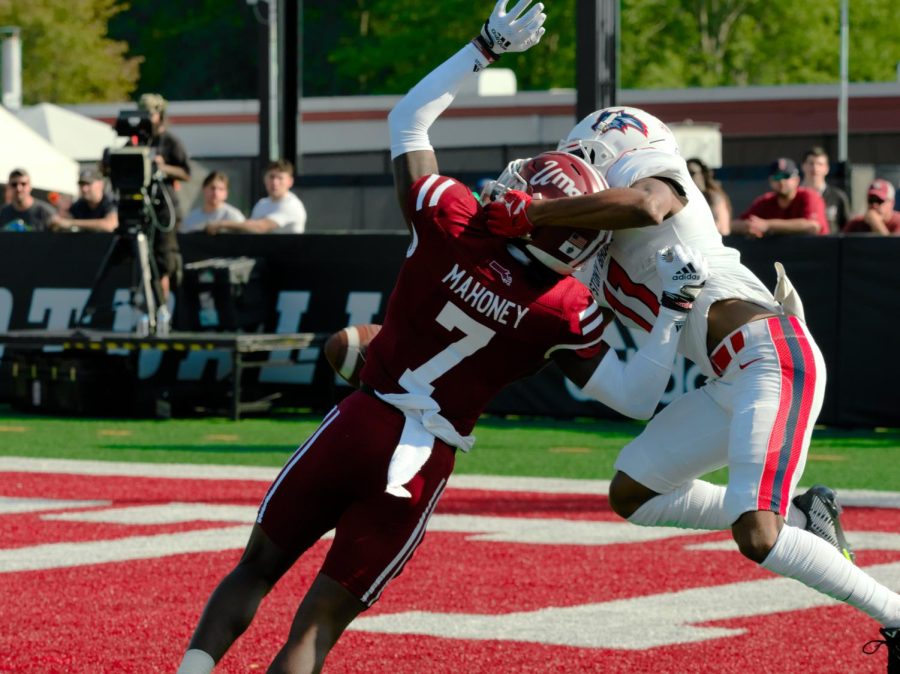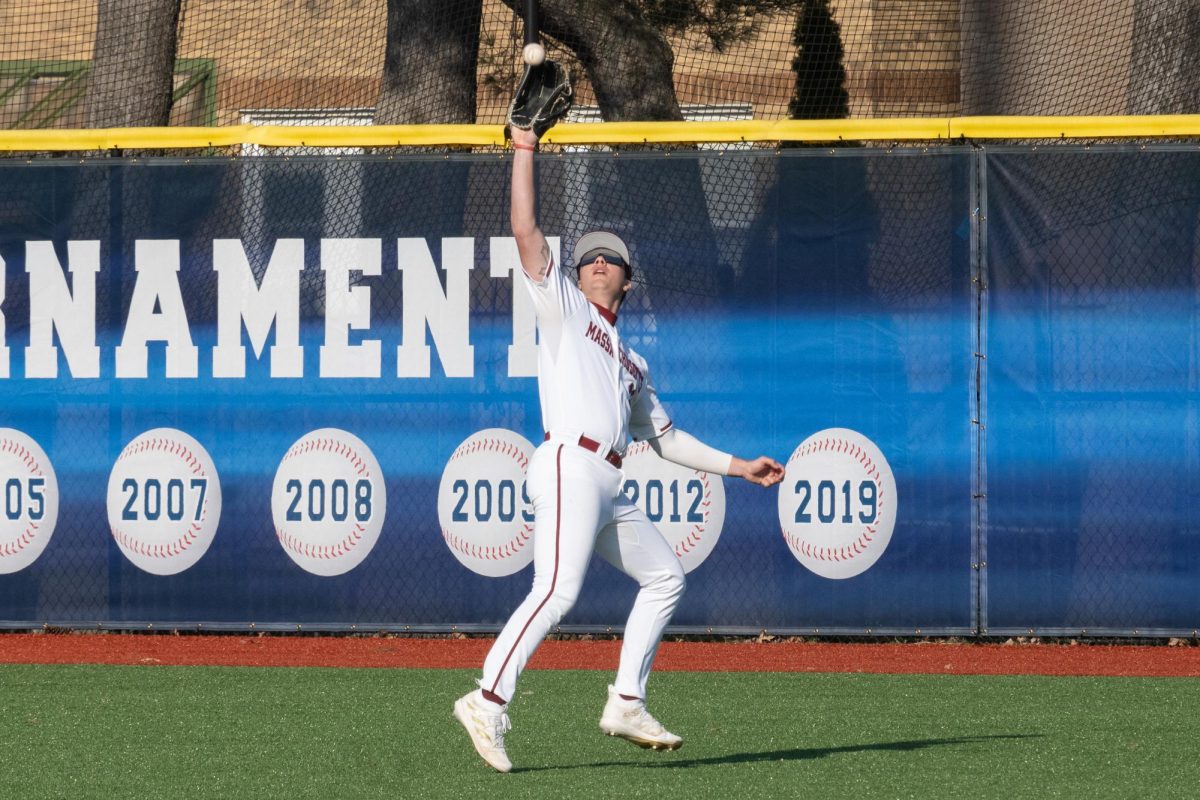The Augusta Savage Gallery at the University of Massachusetts held its first digital exhibition this academic year titled “Breathing While Black” as part of the gallery’s 2020-2021 theme, “Healing Bodies”.
The exhibition was a “juried visual art exhibition, inviting international response to the recent and ongoing slaughter of Black Americans,” as stated on its introductory slides. It launched on Sept. 1 and will be available until November.
Theresa Jenoure, Ph.D., the now-retired director of the Augusta Savage Gallery, came up with the idea for the exhibition.
“It was one morning, I turned on the news and it was about another killing of a Black man in the end of May,” Jenoure said in an interview over Zoom. “When I turned off the news, I was about to have a meeting with my colleagues at the Fine Arts Center which was going to be an all-staff meeting. I just was filled inside of myself with this feeling that I wanted to create something that was really meaningful and not do business as usual.”
At the meeting, Jenoure told the staff about her idea to hold the exhibition. She had thought of the idea just moments before.
“I said I’m going to make it international,” Jenoure said. “I want to hear international voices and I want people in preparation to create work in response to everything that’s going on.”
Jenoure said she named the exhibition “Breathing While Black” “because of all the things that people should do ordinarily — drive, walk — the common things people do and now we see that we [Black people] can’t even breathe or ask to breathe.”
She also added, “There’s that irony in the statement [Breathing While Black]. It’s like saying, ‘Oh excuse me, I’m Black and I dare to breathe the air that anyone else [does]? How dare I?’”
When it came to the art itself, Jenoure said she was mainly looking at rhythm and drama.
“I was interested in creating a rhythm that was palpable, a rhythm that would occasionally make you stop, and then occasionally make you move quickly, so rhythm was really at the forefront of my thinking and even drama, you know, rhythm and drama,” she said.
Although she did two digital exhibitions in Spring 2020 when campus first shut down, Jenoure emphasized how not being in a physical space changed the way she viewed the current exhibition.
“It’s very different for me than working in the physical space of a gallery where I might be a little more interested in color, combinations and the way it colors, or how shapes move against each other and that was less the case here,” Jenoure said. “I think I wanted to create an atmosphere for the occasion of honoring Black bodies that have suffered.”
Talking about her purpose for the exhibition, Jenoure said, “I think there’s so many objectives here, to respond to the violence and the killing of Black people, to allow responses from the international community.”
Jenoure said she was appreciative of the many artists from across the world that contributed. To find artists interested, the organizers put together an international call asking if artists are interested in creating an exhibit for the project
“We make new friends, we find new artists who interest us and so we can follow up and ask, ‘Oh would you like to have an exhibit?’ And so we can continue making those connections.”
When it came to conceptualizing her idea, Jenoure explained, “I had the vision for it, I created the language to invite the world to participate and I put together a three-person jury to take a look at submissions and we made decisions, and then I put an order of how I wanted the images to appear.”
Alexia Cota, interim director and former manager of the gallery, was in charge of executing the entire project in a virtual manner.
“After Terry [Dr. Jenoure] told me about the idea, we made a link to our website where people could apply,” Cota said. “The next three or four days was pushing out the message that we’re having an artist call on this subject. We emailed our emailing list, sent out a press release, posted it on every artist call website we knew of and emailed galleries and museums.”
Once they got the artwork, decided on the pieces and order and checked to make sure everything was in place, they launched the project.
“Once we checked if everything was correct — the picture was high quality, the title and description of the piece, the author’s name, etc. — we put everything in an InDesign file, and then put that in a Flip PDF file, which is the interactive program you see when you click on the exhibition,” Cota said.
Cota was also surprised by how quickly this project was completed.
“It was all done between June and September, which is a pretty big turnaround,” she said. “Normally, if we do an artist call for an exhibition in, let’s say 2021, we would’ve posted for it in January 2020, so it was much quicker this time.”
Given the importance of the topic, the gallery knew they had to do something fast, she said.
“We usually give ourselves a lot of space to do these things but because this was such an important topic, we knew we had to do something right now and so we got it done quickly,” Cota said. “It was a lot of work, but it was definitely worth it — the response has been tremendous.”
Cota explained how the shift was, going from a physical space to a virtual one. She explained, “[Doing a digital exhibition], in a certain way, was significantly easier than receiving artwork in the mail as in the mail, it’s making sure that it was in the shape that it came in, that there wasn’t any damage and then packing it up and sending it back — it’s very physically labor intensive — whereas this was more a lot of email, a lot of file storing and cataloging and making sure that everything I was saving was right.”
Speaking about the challenges in the virtual space, she said, “It was a logistical challenge in the sense that it was just a new way of trying to be organized about how the artwork was saved and the information attached to the artwork — it was more of figuring out the easiest, smoothest and best way to handle all of that. Once we had collected the artwork, then it was just a matter of creating an online catalog.”
In order to recreate the experience one would have in a physical setting, Cota also held a virtual opening reception.
“We had a virtual opening reception on Zoom — anyone who wanted to attend, all they had to do was either go onto the website or call the Fine Arts Center box office and register for it. It was essentially purchasing a free ticket,” Cota said.
“I had a number of the artists from the exhibition speak [at the opening reception] and Dr. Jimoh from the Afro-American studies department was also kind enough to come and speak about the exhibition,” she said, “This exhibition is a part of the Afro-American Studies department’s 50th anniversary symposium, so we partnered together with particular project as the Augusta Savage Gallery is a part of the New Africa House, which is where this department works as well.”
“We had [about] 100 to 120 odd people at the opening, I believe, and it was the first time we’d ever done anything like that,” said Cota. “It was an experiment, but it was very well-received, I was pretty happy with it.”
Cota wanted her guests to interact like how they would in a physical exhibition, so she made use of Zoom’s breakout room option.
“People were put in breakout rooms so they could get to know each other and have their own little discussion, sort of like how you would at an opening reception in a gallery,” Cota said. “You sort of walk and you meet people, and talk to people, so we tried to sort of give a slight recreation of that kind of experience where people get to talk about the artwork and talk to each other and make connections.”
As for the future of such digital exhibitions, Cota said, “I would like to [implement more digital projects]. Something that I would like to do is have better access for people who can’t come to the gallery in a physical space. To have that artwork within that place, to walk in and see what you see and how we present it, it’s such a big part of what we do and so I would like to have better access for people who can’t come to the gallery and have the exhibitions available to them.”
“It’s a tremendous privilege to work with artists who are creating artwork that has such a visual impact and communicates so much and addresses such an important topic, so really I’m just a very fortunate individual that this is what my job is,” said Cota. “I love my job, to be able to present artwork that addresses issues that should be addressed and should be a part of everyday discourse and it’s amazing for me, and I’m very happy to have been a part of it and to be a part of putting it together.”
Nkosikhona Ngcobo, a student at the University of South Africa, was one of the international contributors in the exhibition, and wanted to bring native voices into this movement.
“I wanted to add the native voice to the struggle and the killing of [B]lack people in the hand of the police,” Ngcobo said in an email.
Ngcobo’s piece, titled “We Breathing Blood Because You Killed Us,” responded to the issues with police brutality. Ngcobo said that he wanted to be the “voice of reason for [B]lack people.” He also said, “enough is enough of this killing by the police in the U.S.”
Ngcobo also spoke about his feelings, saying that he was “excited and over the moon.”
“It was a proud moment for me, as an international artist, to contribute to such a big event, which I hope there will be more upcoming events such as this one,” he said. “It was humbling as it [the exhibition] shows that the spirit of Ubuntu (humanity) is still there.”
Anne LaPrade Seuthe, director of Hampden Gallery and a member of Jenoure’s selection jury, was impressed by the team’s work.
“The breadth and depth of the work is impressive,” said Seuthe. “The action of Dr. Jenoure and Alexia Cota responding quickly to the murder of George Floyd by opening a platform for artists around the world to respond through their work, providing an audience for the work — it speaks perfectly of the work that Augusta Savage Gallery has done over the past 30 years.”
Mahidhar Sai Lakkavaram can be reached at [email protected]. Follow him on Twitter, @Mahidhar_sl.



















